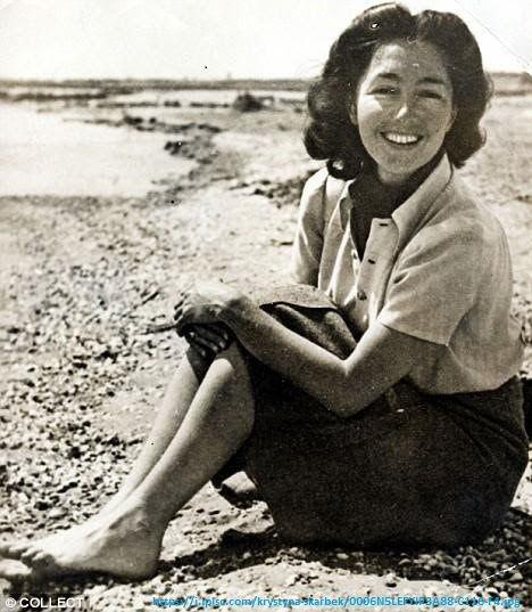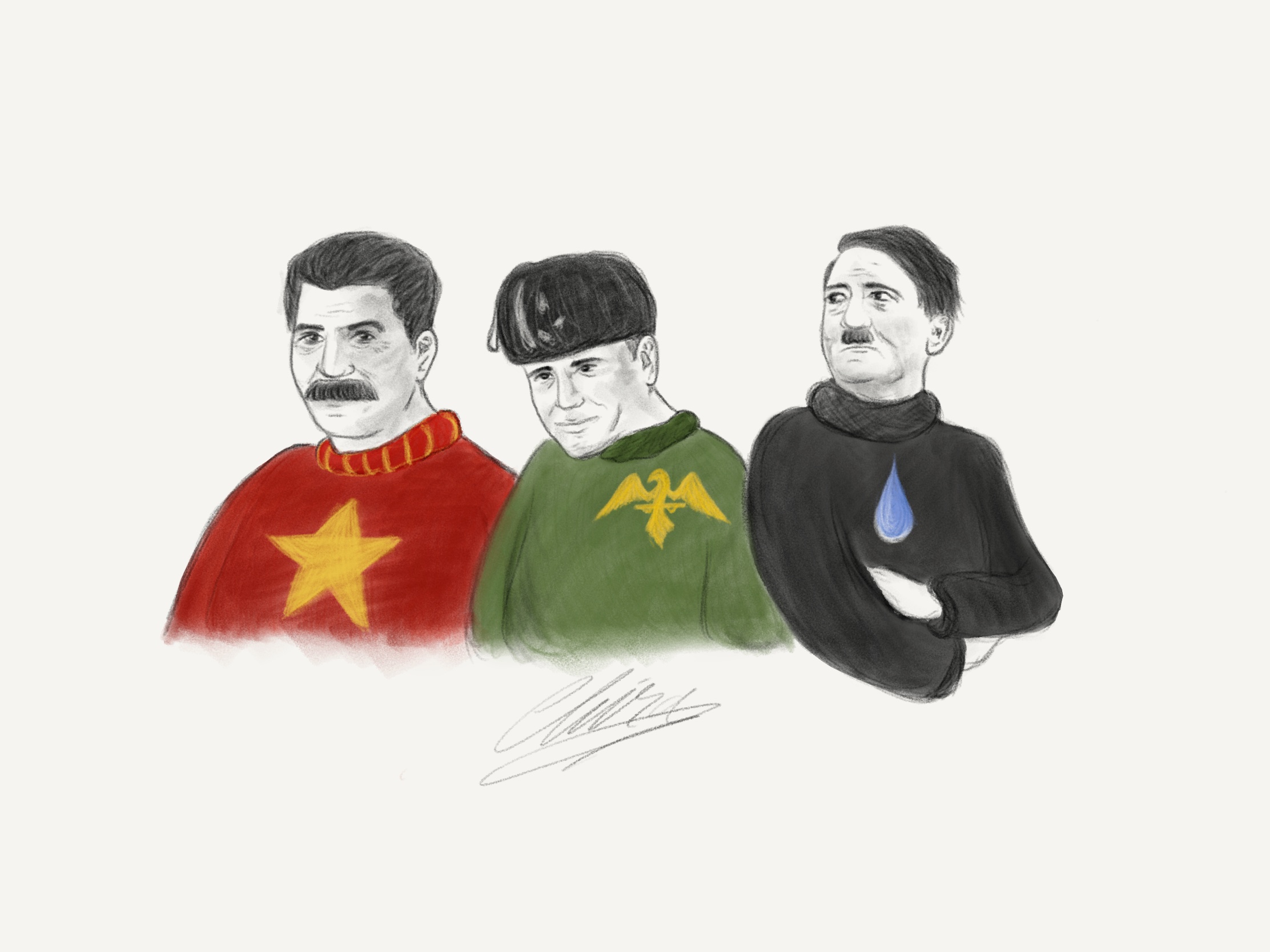By Radoslaw Gryczka
Translated by Zuzanna Mietlinska
What is this all about?
We all know the topic: the Second World War started on September 1st 1939, and ended on May 8th 1945. But just between us, this information is anything but interesting – as we endlessly repeated it in school. You are given trivia about this period throughout your education, but you should realise that this is just a fraction of the knowledge you can acquire. The largest conflict of the Western world took place incessantly for over 6 years, not only on military grounds but also on intelligence, propaganda, cultural, religious and ethnic foundations. In this article I will try to give a quick rundown of this gruesome incident and of the people that changed the fortunes of war irrevocably.
If you don’t believe me, you can read the text. Naturally, it concerns World War Two, but with a slightly… different approach.
The proper beginning
Every event in history has three essential aspects: reason, process and effect. Of course, World War Two has many roots and culprits but I won’t enumerate them all. Why so? You wouldn’t remember them anyways. I am also sure that you can put it in three simpler words. Easy, right?
Those three words are: Hitler, Mussolini and Stalin.
Benito Mussolini
Let’s start with some facts about the one which is often considered to be the least likely to end up in Hell: Benito Mussolini.
Who was he? As discussed in the lobby, he was treated as a cornball version of Hitler; but in reality, he was a sexaholic, a slobby deserter and an incurable fetishist. This 20th Century Julius Caesar was allegedly playing with knives when he was around 10, much to his friend’s dismay. When he grew up he became a teacher and was known for his “firm hand”. This seems logical after you realise that he was a knife-stabber.
As a young adult, he caught syphilis. Why? Regrettably, he was sleeping with girls without their consent. This only means one thing: Benito was also a rapist. Of course, when he became a duce, women went to bed with him without great hesitation.
Mussolini also worked as a builder in Switzerland but this is a short, rather insignificant episode. What did he become after that? A homeless man! He became so devoted to crime that he was quickly moved back to his home country, where he continued his career as a total failure. Then again, it turned out that his unsuspected talent for gripping and dramatic speeches could be useful; for instance, in a fascist party.
When the First World War broke out, Mussolini fought on the front. Later on, his warlike contributions were glorified, as if he was “the real deal” of the story. But fear comes from fear; he started having something we would call a form of PTSD. He united the fascists and organized a military coup. But maybe his fear dominated his mind – he did not take part in his own putsch! Perhaps he wasn’t such a hero after all…
But what did he do for his country? He certainly fought against mafia, banned porn (hypocrisy?), built factories, discoursed, and also signed a concordat with the pope.
How did he die? He was killed by the Italian guerrilla. When the firing squad brought guns to bear on him, one of his contemporary lovers covered him with her own body and exclaimed: “You can’t kill him!”. Well, they certainly could, and shot her too.
Adolf Hitler
Another part of the story is, perhaps, one of the most unrealised artists of the 20th century: Adolf Hitler. Surprisingly for some, he was an Austrian of Jewish origin; something he was ashamed of his entire life (another hypocrite?).
Let me start with his early life: did you know that little Hitler sung in a church choir? If not, this essential knowledge is now yours. You are more than welcome.
What aspects about his warlike career are often neglected on history lessons? He took part in the Great War during which he had a rather unpleasant “adventure”. During the Battle of the Somme he was injured, and an unknown British soldier pointed his gun at him. Unfortunately, the man spared Hitler’s life and let him go. I’m curious about whether the British soldier ever got to know what he actually did.
Not everyone knows that Adolf Hitler aspired to be a painter and was not admitted to the Academy of Fine Arts in Vienna – which used to be a really prestigious university. His paintings were commissioned by a committee consisting of… Jewish professors. They rejected Hitler’s efforts twice. Why? Allegedly, he was able to paint ravishing landscapes but could not handle human silhouettes.
Did you hear about the exercise Valkyrie? If not, then, in short, it was an almost successful dictator assassination conducted in 1944 by Germans in the Polish city of Wilczy Szaniec. These people disliked the fact that the Third Reich was losing on every front despite Hitler still believing in a great victory. The whole thing was coordinated by baron von Stauffenberg, and the plan was easy in theory: to plant a bomb in a suitcase during a deliberation with Hitler himself. If the plan succeeded, von Stauffenberg, being the commander of Reserve Army, was to arrest the SS officers and the Gestapo. Again, unfortunately, Hitler survived the attack. The table was too thick, and the meeting place was relocated at the last minute.
Joseph Stalin
Now I’d like to go forward to my favourite “celebrity” of them all – Ioseb Besarionis dzе Jughashvili. This undersized Georgian adopted an “artistic pseudonym”: Stalin, which means “man of steel” in Russian. However, I suspect that somehow he did not pattern himself on Superman.
Just like his Nazi buddy, Joseph Stalin had been in a church choir when he was younger.
Apart from a singing talent, he also had a tough childhood: being beaten by his own father.
That’s exactly why one of his hands remained shorter and less active for the rest of his life. You know what characterized the dictator? Okay, the brutality too, but what I specifically mean was his fear of the dark. Yes, the light was always on in the Kremlin. No, it doesn’t make him any more delicate and likeable.
Stalin died in 1953 and I know that we should follow the de mortuis nihil nisi bonum (“of the dead, [say] nothing but good”) but I’m sure that many people breathed a sigh of relief. At this point, I can cite a small joke, one of those ‘ambitious’ ones. It was frequently claimed by Varsovians after the red chief’s death:
“What was Stalin killed by? By good luck!”
I don’t know about you but it gets me every time.
Okay, but I blabbed on about the three horsemen of the apocalypse when it is only the beginning of the story. The course of the Second World War is known. It started with the Nazi attack on Poland, and ended by the Allied claim on Berlin in May 1945 (well, technically, it was rather on the 2nd of September 1946, when Japan capitulated). I would like to introduce martial, intelligence actions, as well as certain personas with which not all of you are familiar despite their contribution to changing the course of the War.
Norwegian heavy water sabotage
Have you ever heard of the Norwegian heavy water sabotage? How did it happen that a group of heroic Norwegians prevented a plausible nuclear war?
The Nazis, just like the US, did work on nuclear armoury. Essentially, they needed some heavy water to produce this deadly weapon. By conquering Norway, the Third Reich acquired the access to this raw material. The situation was really unsettling. Can you imagine Nazis, but armed with nuclear bombs?! Fortunately, there was someone who upset their apple cart. It was the son-in-law of Maria Sklodowska-Curie that jetted off with a supply of heavy water.
It became clear that he thwarted the plots of his enemies. However, it was still possible to produce the material; it would just take more time. What did the Allies do?
Of course, they could not give permission to produce the material. Therefore, the British decided to destroy the factory. It was situated in the mountains, meaning only the Norwegians could get inside of this inaccessible terrain to prepare the target. As it happens, not everything went according to plan.
Namely, the English did not come, the Germans learned of their attack and strengthened their defences, and the Norwegian paratroopers were dropped so far from the target that they met the first signs of civilization after two weeks of travel. When they finally reached their destination they had two possibilities:
- Go through the main gate, with reinforced German defences
- Pass on a vertical wall covered with ice
The Germans did not even think someone would try to climb the wall. The descendants of the Vikings imperceptibly entered the factory grounds, slipped inside, planted explosives and everything exploded!
But one of the Wehrmacht soldiers saw the Norwegian in disguise – all according to plan. Why? Because the Norwegians wore British uniforms and also communicated in English. What for? To mislead the Nazis as they did not want them to take revenge on the locals. To be honest, I always like when the Nazis get owned, don’t you?
Female James Bond

Last but not least, a pop cultural reference of World War Two. Polish agent, Krystyna Skarbek, was a female James Bond… literally.
She was most probably born in 1908, and was known for her beauty – which surely helped her in her intelligence career. She performed such actions as an escape from Gestapo headquarters in Budapest, stealing the German operational plans, and conducting bombings. Her adventures are a matter for further articles; I certainly recommend reading about her from external sources.
Ian Fleming – a British writer and the author of James Bond series was … Krystyna’s lover. As you can guess, the woman told him about her adventures, and he was inspired to write. Everyone knows the James Bond movies. Personally, I like Daniel Craig and Pierce Brosnan the most. And what is the most important part of films about agent 007? Pursuits, fights with bandits, or charismatic opponents? No, women. The first of them, Vesper Lynd, was modelled on Krystyna.
Unfortunately, Skarbek’s story has no happy ending. She was stabbed in unclear circumstances by the Irish. It is strange that a woman who was a great spy, with a license to kill throughout the war, was afraid of some Irish guy. Conspiracy theories come to mind; did the British kill her because she knew too much? Was it revenge of some foreign intelligence? Or just bad luck? Will we ever know?
That’s all I have for you today. As you might have seen, the history of World War Two conceals many interesting facts you have not heard in school. I highly recommend searching for more information yourself, as it may hide some absurd plot twists and unapparent linkages.
Edited by Amelie de Paepe
Artwork by Chira Tudoran

